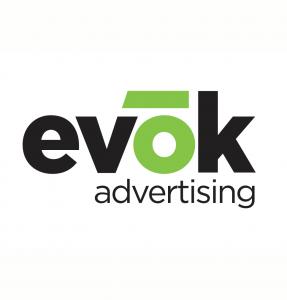Evok Advertising Reveals How to Balance Customer Acquisition and Retention for Maximum Growth
Evok explains how balancing customer acquisition and retention with marketing budget optimization helps businesses grow revenue and build lasting loyalty.
Companies that understand when to invest in attracting new customers versus nurturing existing ones can optimize their budgets, strengthen relationships, and drive sustainable growth.”
LAKE MARY, FL, UNITED STATES, September 8, 2025 /EINPresswire.com/ -- In today’s fast-paced business environment, marketers face growing pressure to achieve more with limited resources. One of the most critical decisions businesses must make is how to allocate their marketing budgets between attracting new customers and retaining existing ones. Evok, a retention marketing agency, released a comprehensive guide, “Customer Retention vs. Customer Acquisition: Where Should Your Marketing Budget Go?” offering expert insights on balancing marketing investments for maximum impact.— Larry Meador
The blog explores the differences between customer acquisition and retention, the costs associated with each, and the strategic considerations that should guide marketing decisions. While acquisition campaigns often deliver immediate visibility and fresh revenue, retention efforts have proven more cost-effective, sustainable, and profitable over time. By understanding when and how to prioritize each, businesses can structure campaigns that drive both growth and long-term loyalty.
A strong customer acquisition strategy focuses on attracting new individuals to a brand and converting them into paying customers. Tactics often include digital advertising, paid social media, search engine marketing, influencer partnerships, content marketing, and events or sponsorships. Each initiative is designed to introduce a product or service to new audiences and ideally turn one-time visitors into loyal customers. Monitoring metrics like customer acquisition cost (CAC) ensures businesses grow efficiently while maintaining profitability relative to customer lifetime value (CLTV).
Retention, in contrast, emphasizes nurturing existing customer relationships. Common tactics include email campaigns, loyalty programs, appointment reminders, personalized offers, and reputation management. These strategies encourage engagement, repeat purchases, and long-term loyalty while reducing churn. The cost of retention is typically lower than acquisition, and the return on investment often exceeds expectations, especially when customers are satisfied and consistently engaged. Metrics such as customer retention rate, churn rate, repeat purchase frequency, and CLTV are essential to measuring the effectiveness of retention initiatives.
Effective marketing budget optimization requires analyzing both acquisition and retention performance, identifying which initiatives deliver the strongest ROI, and reallocating resources accordingly. The blog highlights how the business stage should influence budget decisions, since startups typically prioritize acquisition to build a customer base, while mature businesses often see stronger returns from retention efforts. A flexible, data-driven approach allows companies to scale campaigns efficiently while adapting to market dynamics.
Evok also underscores the role of technology in executing acquisition and retention strategies at scale. Tools like customer relationship management (CRM) systems, customer data platforms (CDPs), marketing automation software, and loyalty engines help businesses segment audiences, personalize messaging, and track engagement across the customer lifecycle. Integration across these platforms ensures consistency, improves targeting, and strengthens the impact of both acquisition and retention campaigns.
The blog provides real-world examples to illustrate these principles. In healthcare, primary care providers may use digital campaigns and geo-targeted search ads to acquire new patients while leveraging automated reminders, follow-ups, and portal engagement to retain existing ones. Restaurants might rely on social media ads and referral incentives for acquisition, complemented by loyalty apps, bounce-back coupons, and birthday offers for retention. In both cases, retention strategies typically cost less per customer while generating higher long-term value.
Evok’s guide also emphasizes the need to consider churn, operational infrastructure, and business lifecycle when planning marketing budgets. Brands with fragmented data or insufficient systems may struggle to execute retention campaigns effectively, while acquisition campaigns without proper funnel optimization or attribution modeling can generate costly, low-value leads. By aligning marketing strategies with operational readiness, businesses can ensure that both acquisition and retention efforts deliver measurable results.
The blog concludes that the most effective marketers do not simply choose between acquisition and retention; instead, they plan strategically, sequencing initiatives according to customer behavior, business maturity, and internal capabilities. Acquisition drives growth, retention drives stability, and together they fuel long-term success.
Larry Meador
Evok Advertising
+1 407-302-4416
email us here
Visit us on social media:
LinkedIn
Instagram
Facebook
X
Legal Disclaimer:
EIN Presswire provides this news content "as is" without warranty of any kind. We do not accept any responsibility or liability for the accuracy, content, images, videos, licenses, completeness, legality, or reliability of the information contained in this article. If you have any complaints or copyright issues related to this article, kindly contact the author above.

